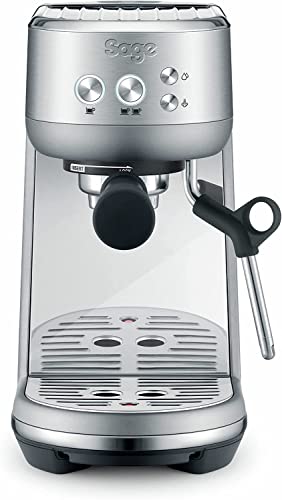Coffee and Espresso Machines
Espresso machines use pressure to force water through finely ground and tamped coffee beans. They produce a rich, flavorful brew.
Good Housekeeping Institute experts recommend models that brew at 9 bars minimum to ensure a perfect extraction. Beware of companies that claim to offer more pressure than is necessary.
Types
The espresso maker (also called a coffee maker or Espresso maker) brews coffee that is more concentrated, and of better quality, than your usual cafe drinks. It works with an average of nine bars of pressure. These machines have many features, including temperature control and brew-strength control, programmable brewing and various sizes of drinks. They may also come with steam wands that are either automatic or manual to create texturized milk for latte art. There are three kinds of latte art of semi-automatic, super-automatic, and automated. Each espresso machine comes with its own specific level and type of automation.
The most well-known espresso machine type for specialty coffee shops is the semi-automatic model. Semi-automatic espresso machines allow baristas full control of the brewing process however they are not as user friendly as fully automated or automated machines. To get the most perfect espresso, you have to grind the beans, then fill the portafilter and tamp it down, then alter the extraction time.
Automatic machines come with built-in mills that measure and grind your grounds. They automatically pour the correct amount of water required to extract the espresso, and they often come with a programmable drink size function. In our laboratory tests, they were the most well-liked type of espresso machine. They provide a nice combination of consistency and manual control.
Functions
Whether you choose either a pump-driven machine or a steam-driven one, you'll find an accumulator that holds the water needed to make your coffee. You'll also have heating elements that heat up the cold water to create the high pressure needed for extraction of coffee from grounds.
When the brew lever raises it triggers the water inlet cam to seal the pre-infusion valve so only hot water that is pressurized thoroughly flows through the portafilter before being ground into coffee. The water will take about 25 seconds to turn into espresso.
The insulated tubing, also known as the hot-water tube extends from the reservoir to the spout at the top of your machine. The resistance heating element heats the water while it goes through the warming plate made of steel and the aluminum tube.
When the spout is turned on, you'll place your cup under the spout in order to capture the espresso as it is pushed through the portafilter into your cup. The coffee maker will come with a steam wand that you can use to heat and froth milk for drinks that are espresso-based, such as cappuccino or the latte.
Automatic machines take the guesswork out of making a cup of coffee. They are simple to operate, programmable and are able to measure and grind beans as well as reduce tamping. In our Lab tests they tend to be the most effective because they are easy-to-use and don't demand a lot of user skills.
Materials
The inside of an espresso machine is a veritable world of copper tubes, stainless steel boilers, and sophisticated firmware. It may appear to be complicated but at the core they do just one simple thing: force hot water through coffee that has been finely ground.

When buying an espresso machine, you should consider the dimensions and space requirements, as along with drink options, energy saving options, and brewing accuracy. Look for a button that can be used to turn on the steam wand, which is used for creating lattes and frothing milk. machine espresso of the machine includes a gauge for pressure that can give you the operating pressure for the boiler and pump. Find a coffee maker that has two needles, so that you can observe both the minimum and maximum pressure.
If you're looking for more then only espresso, choose a machine with different brew sizes. This includes the ristretto. You can also find models that come with the ability to remove the milk hopper for effortless, easy frothing and the ability to switch between different types of milk. If you're suffering from hard water, opt for the model that has an integrated water softener to prevent the buildup of minerals and keep your espresso tasting fresh.
Some manufacturers use a thermostat that is digital, integral and proportional to keep an appropriate temperature range when brewing espresso. This makes sure you get a excellent espresso cup every time. This feature can also help reduce energy costs because the machine only runs if needed.
Maintenance
The maintenance of coffee and espresso machines is becoming more essential as they become available to home use. The best equipment can make a huge difference in the quality of your coffee, but only if it's maintained.
Regular cleaning and maintenance should consist of everything from cleaning the group head, steam wand and water filter, to descaling and changing the water filters on a regular basis. As a rule of thumb for making between two and five cups of coffee per day, you should wash the majority of the machine at least once a week. However, some areas of the machine, like the water tank and grinder must be cleaned every two or three months.
You should also backflush the machine each week. This process involves locking the portafilter in position and running the brew cycle multiple times. This will help remove any coffee grounds or oils that have been left behind. You can also clean the portafilter with brushes and cleaners specifically designed for espresso machines.
Maintaining your espresso and coffee machine in a proper manner can ensure that it lasts longer. A lot of professional espresso machines found in cafes and offices are expensive, so it is critical to keep your machine in good working order so that it can last as long as possible.
